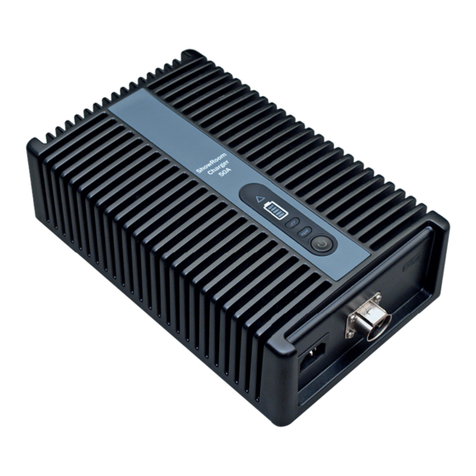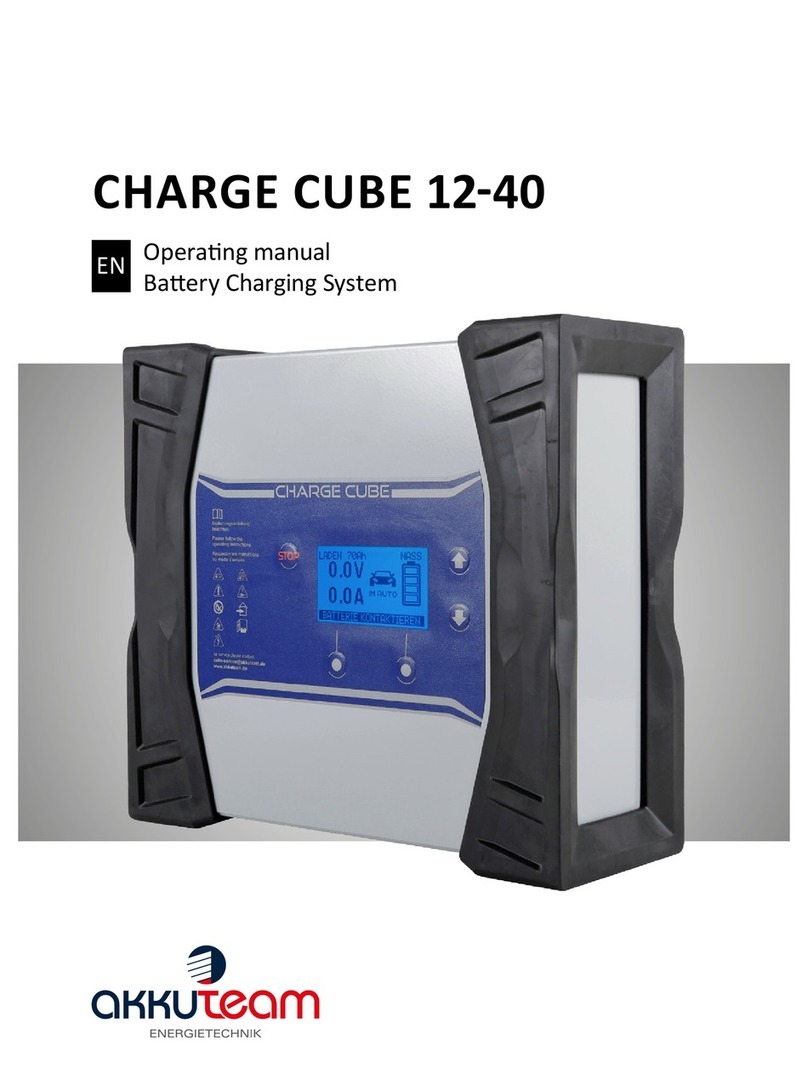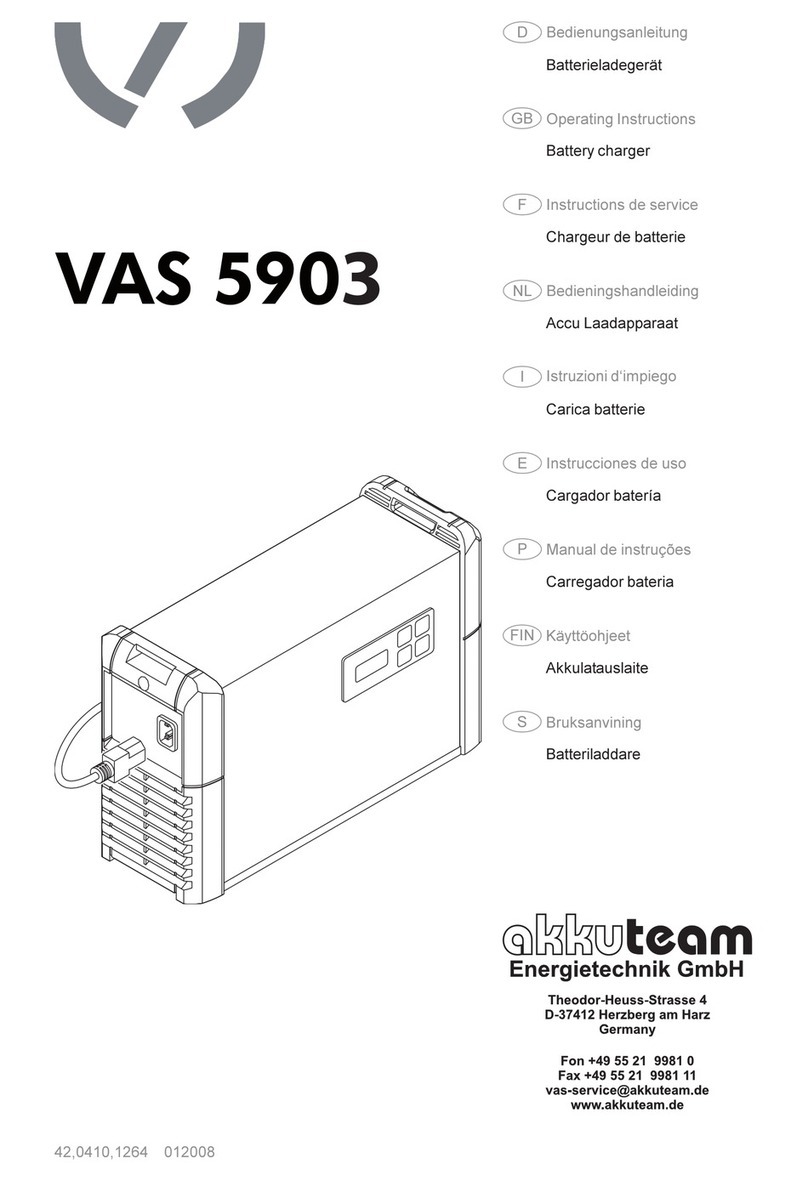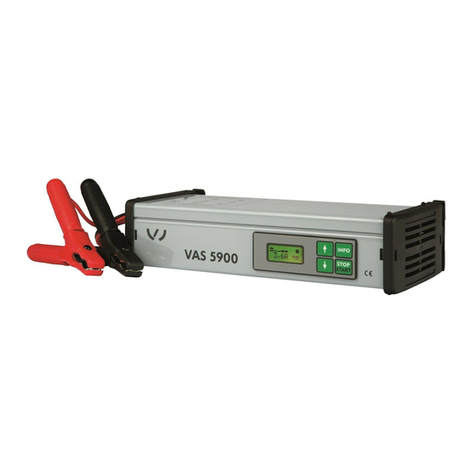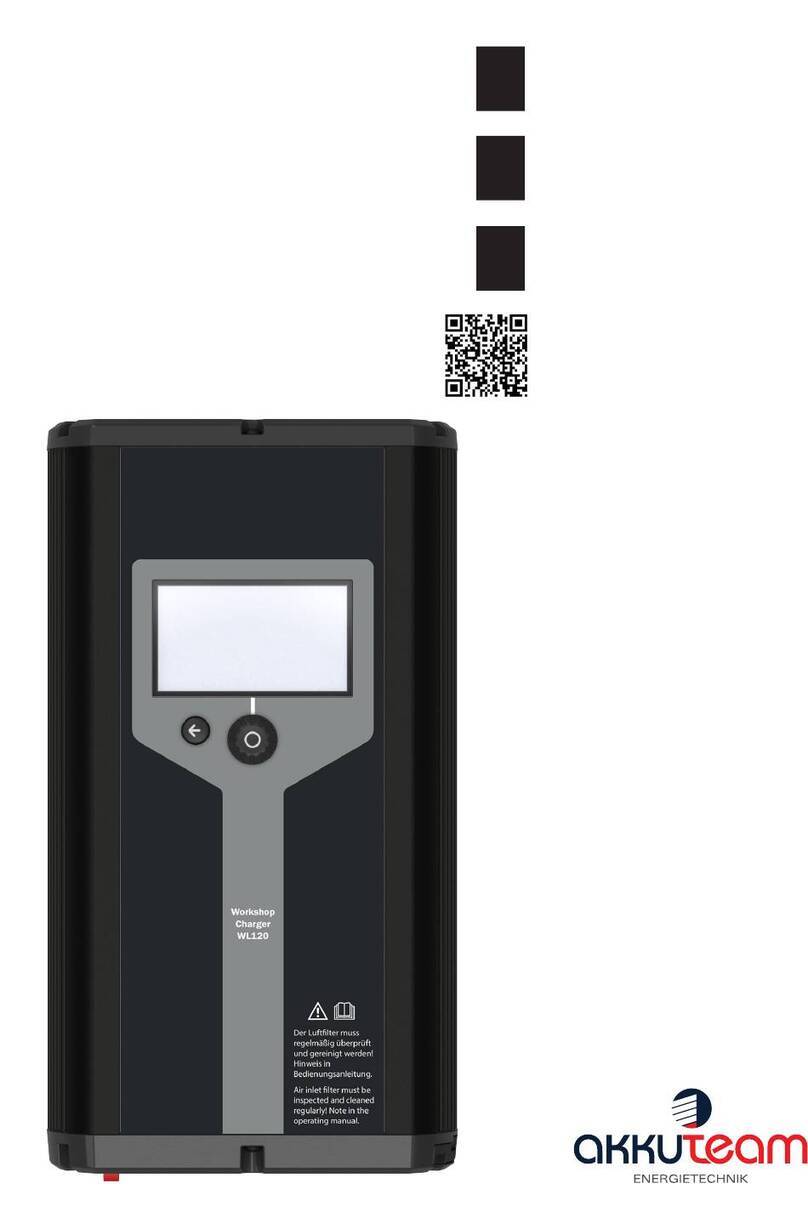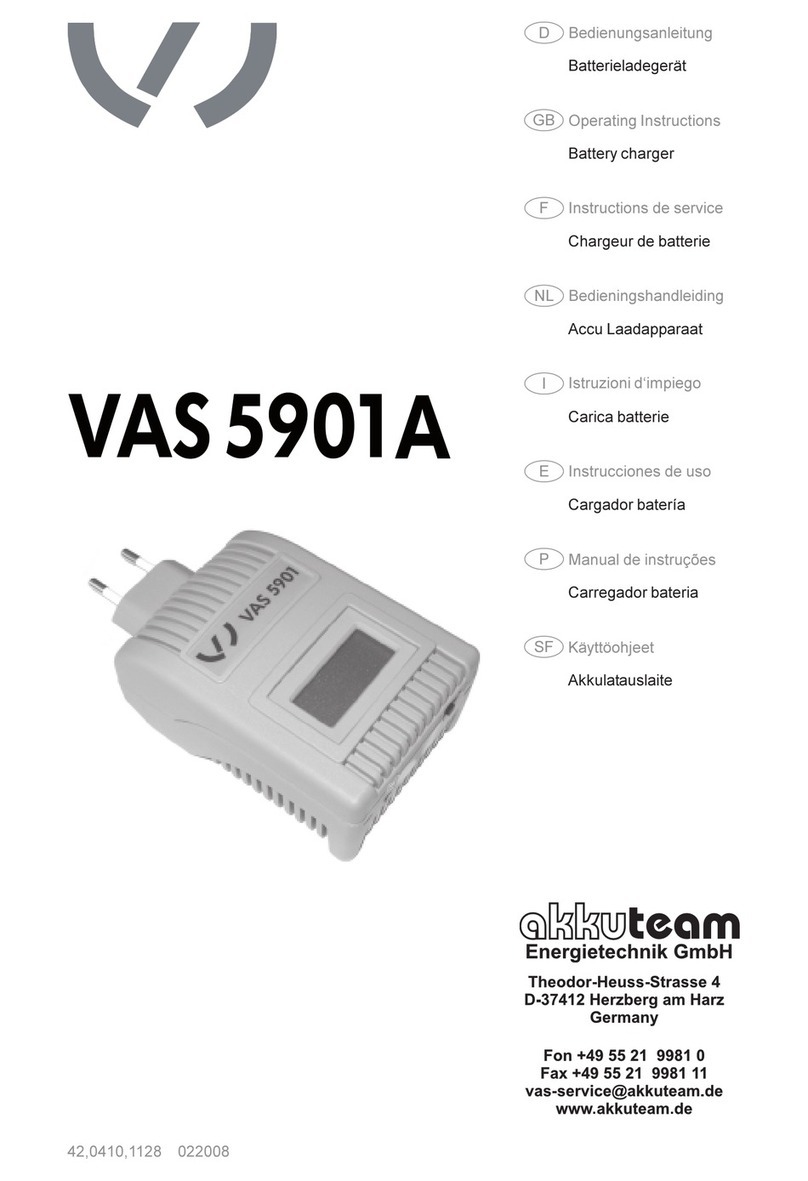8
Risks from
acid, gases
and vapours
Baeries contain acid which is harmful to the eyes and skin.
During charging, gases and vapours are released that can harm
health and are highly explosive in certain circumstances.
– Only use the chargers in well venlated areas to prevent the
accumulaon of explosive gases. Baery compartments are
not deemed to be hazardous areas provided that a concentra-
on of hydrogen of less than 4 % can be guaranteed by the use
of natural or forced venlaon.
– Maintain a distance of at least 0.5 m between baery and
charger during the charging procedure. Possible sources of
ignion, such as re and naked lights, must be kept away from
the baery.
– The baery connecon (e.g. charging terminals) must not be
disconnected for any reason during charging.
– On no account inhale any of the gases and vapours released
– Make sure the area is well venlated.
– To prevent short circuits, do not place any tools or conducve
metals on the baery.
– Baery acid must not get into the eyes, onto the skin or
clothes. Wear protecve goggles and suitable protecve
clothing. Rinse any acid splashes thoroughly with clean water,
seek medical advice if necessary.
General
informaons
regarding the
handling of
baeries
– Protect baeries from dirt and mechanical damage.
– Store charged baeries in a cool place. Self-discharge is kept to
a minimum at approx. + 2 °C (35.6 °F).
– Every week, perform a visual check to ensure that the acid
(electrolyte) level in the baery is at the max. mark.
– If any of the following occurs, do not start the machine (or stop
immediately if already in use) and have the baery checked by
an authorised workshop:
– uneven acid levels and/or high water consumpon in
individual cells caused by a possible fault.
– overheang of the baery (over 55 °C/131 °F).
